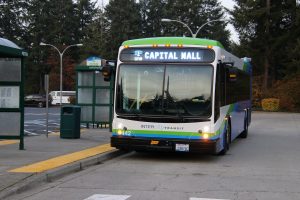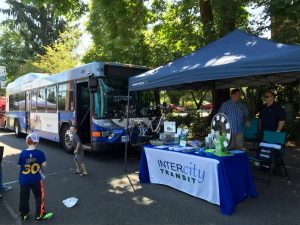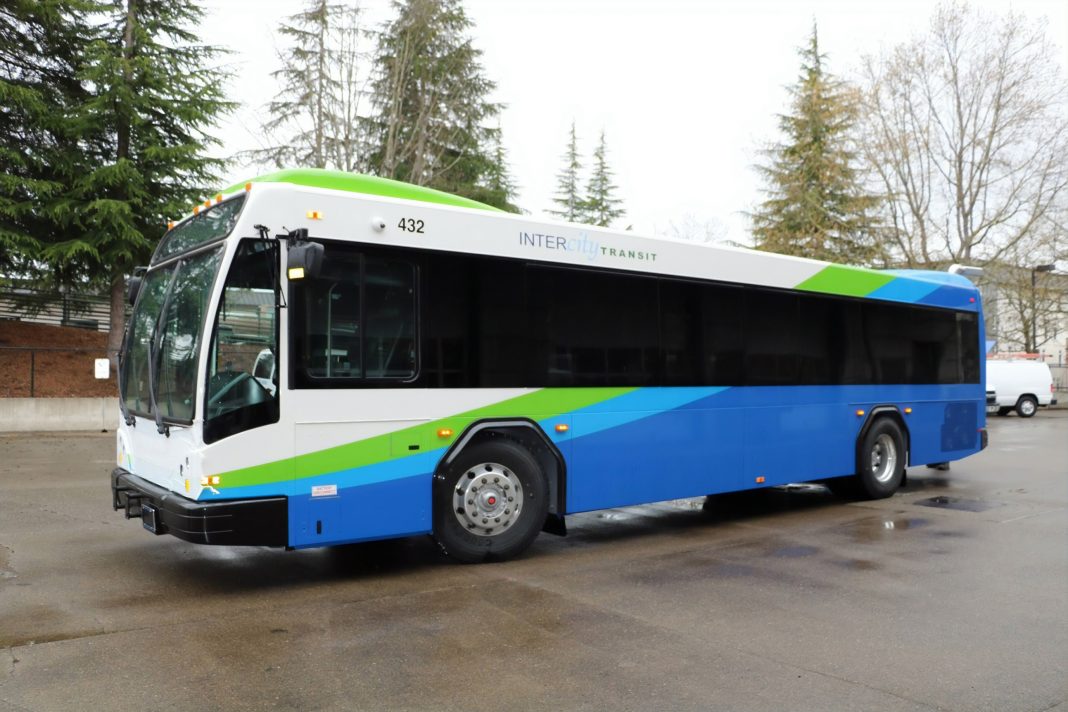When the New Year rolls around we resolve to save money and get a little more exercise. Thanks to Intercity Transit’s new zero-fare demonstration project, you can do both while getting where you want to go. With buses and Dial-a-Lift services covering more than 100 square miles, rides to work, school, events, festivals and shopping galore are a simple bus stop away.

Photo courtesy: Intercity Transit
The transition to zero-fare riding is part of a five-year demonstration project that began in January 2020. It is in direct response to community input received through Intercity Transit’s two-year outreach project, the IT Road Trip. One of the improvements that the community said it wanted was an alternative to the previous fare collection system.
Before anything was decided, staff “conducted thorough analysis of the financial, contractual and staff implications of a variety of different fare collection technologies,” says Eric Phillips, Intercity Transit’s development director. “Many potential alternatives were considered including magnetic swipe cards, contactless RFID cards, mobile flash passes and others.” Most higher-tech options require significant capital and operational investments to implement. And many of these options require a credit card, smartphone, or computer to maintain which creates a barrier for some.
It may seem counterintuitive but eliminating fares won’t result in loss of service. “Intercity Transit is actually expanding service frequency and the range of areas served, per the mandate voters approved with the passage of Intercity Transit Proposition 1 last year,” explains Nicky Upson, marketing, communications and outreach coordinator. “After accounting for collection costs, fares amounted to less than 2 percent of our total annual operating revenue. In a nutshell, the amount of foregone fares is small enough to not impact existing service.”

Financially, this change eliminates out-of-pocket costs for travelers and may serve to stimulate spending with that extra money. Community organizations and nonprofits that purchased discounted bus passes for their constituents will also have more to spend. “Intercity Transit collected over $680,000 from discounted bus pass sales and contracts with local colleges and universities, the state of Washington and local municipalities,” says Phillips. “With the implementation of zero-fare, our partners can reinvest those savings toward other goals from helping clients meet their basic needs, expanding scholarship resources, increasing workforce development opportunities, to ensuring access to medical appointments.”
Zero-fare transit removes barriers when everyone can just get on and go and reduces congestion on our crowded roads and parking lots. Fareboxes have been removed from the existing fleet and are not built into the new models. By March 2020, staff estimates approximately 40 buses will be replaced with newer, more efficient models.
Our schedules are full year-round and there never seems to be enough time or money to do everything that we would like to. Imagine having more money to spend on bills, savings, or retirement planning. Thanks to Intercity Transit, it’s possible. And walking to bus stops definitely adds up in your daily step count. That’s always good for the bottom line.
Read about the many enhancements coming with the passage of Proposition 1, Intercity Transit’s new high-performance route The One, and other news and events on their website or Facebook. Then head out to explore our great region…for free.
Sponsored

















































